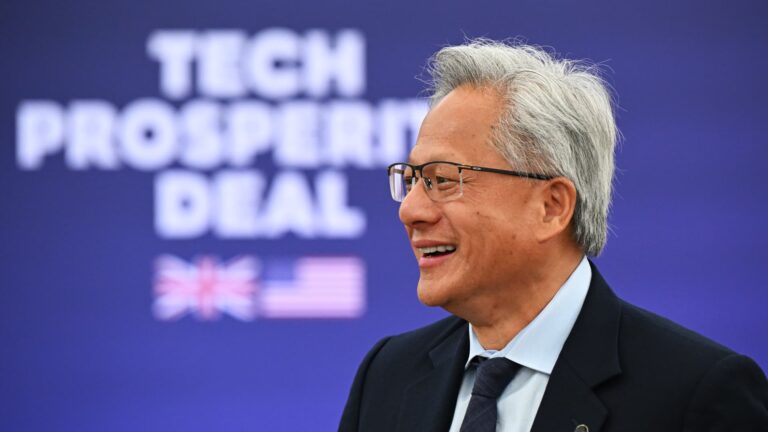Nvidia CEO Jensen Huang attends a press conference by U.S. President Donald Trump and U.K. Prime Minister Keir Starmer at Chequers at the conclusion of a state visit on September 18, 2025 in Aylesbury, England.
Leon Neal | Getty Images News | Getty Images
A conundrum I’d never have to face: After finding sudden success, what should I do with my piles of cash?
The lucky subject here is Nvidia, which transformed overnight from a graphics card manufacturer mostly obsessed over by gamers who wanted to max out their graphics settings, to a chipmaker at the center of the artificial intelligence boom.
In 2023, Nvidia was at the cusp of being valued as a trillion-dollar company. Two years later, its market capitalization is not $2 trillion, not $3 trillion, but $4.28 trillion. That’s 12 zeros after the first figure.
So — how does the company put its money to work? Rolling around in dollar bills is one of life’s greatest pleasures, but any CEO and investor worth their salt knows cash can be a drag on revenue and returns.
While Nvidia has refrained from making splashy acquisitions, it’s taking stakes in, and partnering with, other AI firms, making sure they — and the wider industry — continue orbiting around it.
On Wednesday, it announced a staggering $5 billion investment in its one-time rival Intel, which would enable collaboration between the two chip giants.
News also broke the same day that Nvidia had spent nearly $1 billion to hire the CEO of an AI startup and to license its technology, while on Tuesday the chipmaker unveiled £11 billion ($15 billion) of investment in the U.K, part of which will be used to deploy 120,000 Blackwell chips in the country.
OpenAI and other companies such as Anthropic and DeepSeek kicked off the “talk to a computer” frenzy. But “the big part of the story is the hardware,” “Steve Eisman, the investor who called the subprime crisis, said on CNBC’s “Squawk Box” Thursday.
That means Nvidia, if it manages to hold on its position as market leader — a feat not guaranteed, given up-and-coming competition from Chinese chips — might have to look for more avenues to channel its cash toward. But what a pleasant task that would be.
— Yeo Boon Ping
What you need to know today
And finally…
Several flags including that of the United States, Cambodia, the European Union, Japan and ASEAN are seen outside a building in Krong Siem Reap, Cambodia, on July 27, 2025.
Anadolu | Anadolu | Getty Images
Fed cut sets stage for Asia’s next easing wave amid trade strains
Asian central banks may find more room to ease policy after the Federal Reserve cut interest rates by a quarter percentage point Wednesday and signaled more reductions ahead.
However, two major Asian economies have defied the rate-cutting trend: China and Japan. For Japan, its central bank is not only holding rates, but is aiming to raise them as it strives to normalize its monetary policy. China is balancing the need for stimulus with concerns of fueling a stock market bubble that could repeat the crash of 2015.
— Lim Hui Jie, Anniek Bao

